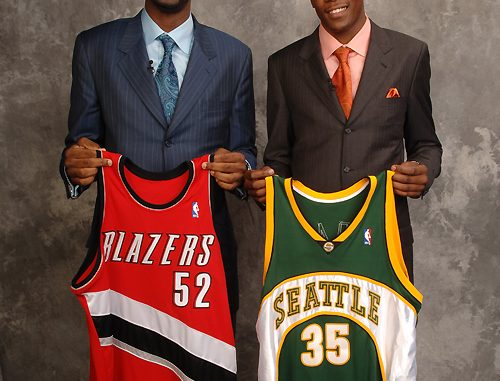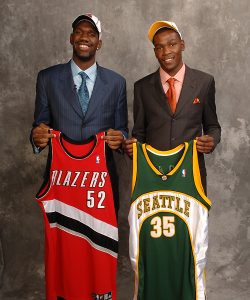
Anthony Beers, Staff Writer
In 2006, NBA Commissioner David Stern announced that all aspiring NBA draft picks need to be at least 19-years-old, have at least one year of college or be one year removed from high school. This is now known as the “one and done” rule and remains a controversy to this day.
In some cases, a player can be so talented at the high school level that their future success in the NBA can be clear at an early age. Players such as Amar’e Stoudemire, Dwight Howard and LeBron James all had such raw athletic potential as high school students that they were able to immediately declare themselves eligible for the NBA draft and still have an impact as rookies. It takes an immeasurable amount of talent to accomplish this and most members of the general public cannot comprehend how good these young players actually tend to be. From the players perspective, the “one and done” rule only furthers their risk of getting injured before being drafted and is merely delaying their goal of being a professional basketball player.
As for the perspective of the NCAA, this can really benefit the college level of basketball. Even if it’s just for one year, any player having an impact on the athletic program at a university is beneficial for the school. The NCAA also argues that this is an opportunity for an aspiring NBA player to showcase their athletic abilities at the college level and perhaps increase their value for the NBA draft. And of course, the value of getting an education (even a short one) can be a rewarding aspect for a young player who’s looking to mature as an adult and as a professional. Players such as Kevin Durant, Derrick Rose and OJ Mayo have all had “one and done” college seasons and have gone on to have excellent NBA careers.
This rule is still a controversy as many believe that forcing players to go to college for a season is way too controlling and that all players should have the freedom to do what they want. It’s a valid point, especially if players are planning on leaving the second they conclude their one season on the college level. But a positive of the rule that fans don’t tend to talk about is that it can have a great effect on the mentality of an aspiring player. If a dominant high school athlete is simply awaiting his NBA destiny, an ego for the young player is imminent. He wouldn’t have to worry about high school grades knowing that the NBA draft is waiting for him. But with the “one and done” rule, an aspiring athlete can still focus on school and know that the challenge of college is a step in the way of their dreams. This not only challenges the player, but humbles him. He knows he still has to work, both on and off the court before the NBA.
Let’s not kid around though and act like a future NBA star at the college level is getting a great educational experience, because it is likely he is going to focus on his athletic potential more than his studies. And of course there are still problems with the NCAA and the corruption of young athletes potentially being paid or bribed at their universities. These are all issues that fans may likely never know the truth. But if there’s one thing fans can take from the “one and done” rule, it’s that it is more beneficial mentally for the aspiring NBA athlete than physically.
Though a high school basketball player may be physically ready for the NBA, his mentality and maturity level may not be. With the “one and done” rule, future NBA stars at least have the humbling experience of college basketball. In the NCAA, bringing home the gold is an almost impossible thing to fathom, so tasting the real competition in the March Madness tournament before being drafted can have a very positive experience mentally for young athletes and perhaps better results for the future of NBA basketball.
Leave a Reply